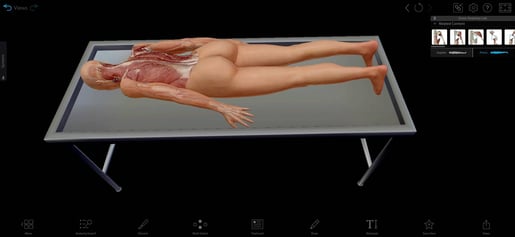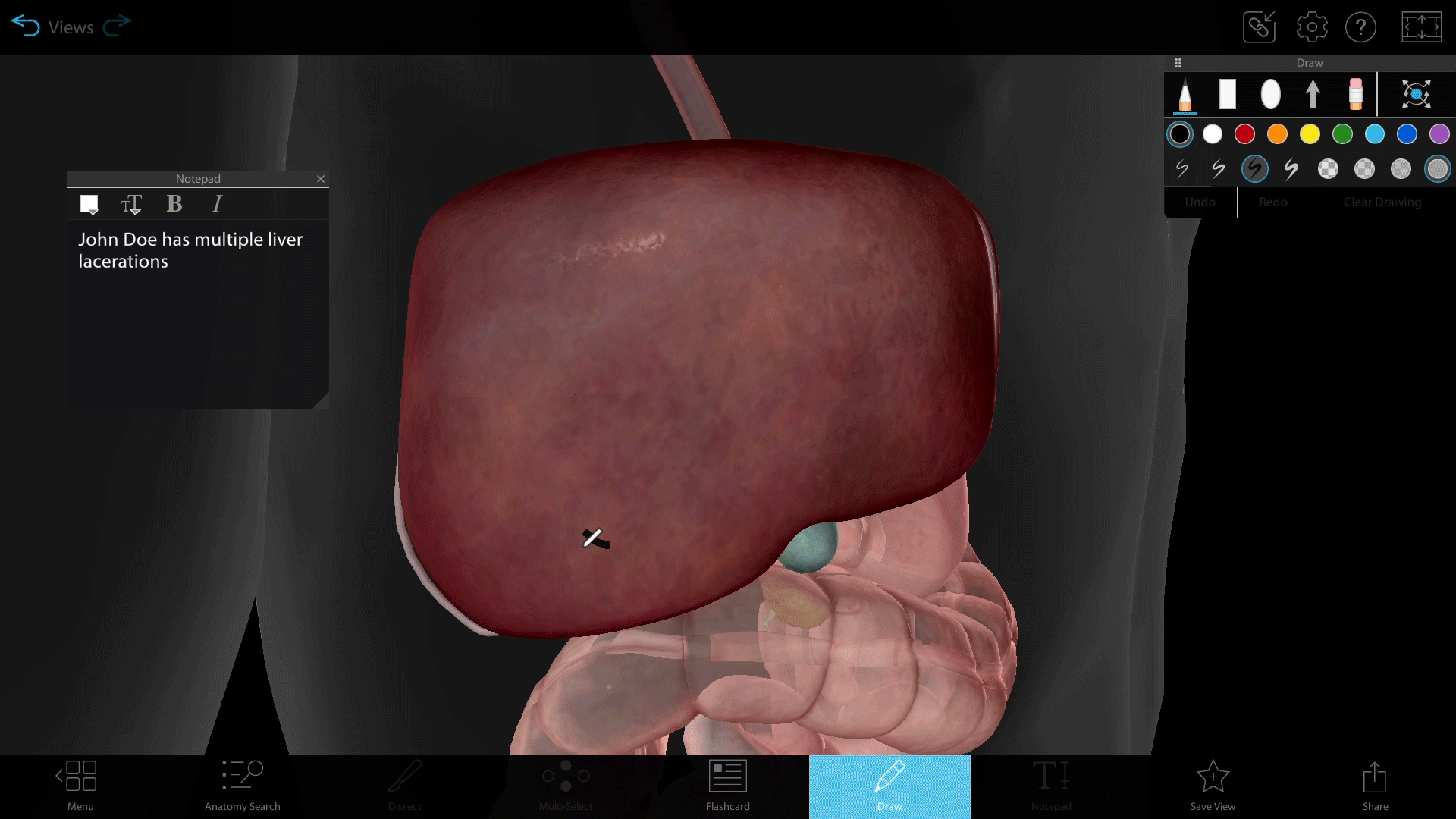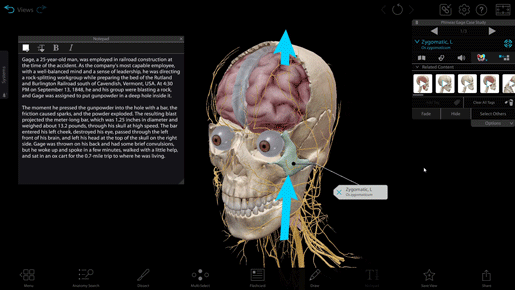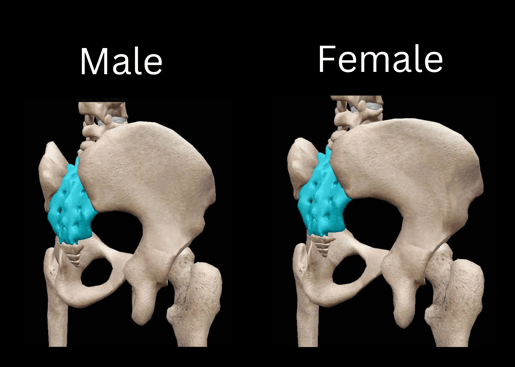6 Ways to Use Visible Body in a High School Forensic Science Class
Posted on 9/29/23 by Sarah Boudreau
Forensic science is a popular class in many schools—students love to use their critical thinking skills to tackle real-world problems. It can be a challenge for teachers to find high-quality teaching materials for their forensic science classes, but Visible Body Suite is here to help!
VB Suite is known for its vast library of interactive anatomy, physiology, and biology content that makes it easy to explore the body and visualize tough concepts. Not only does it contain models of over 6,000 structures, but VB Suite has flexibility, interactivity, and features that make it a fantastic teaching and learning tool. VB Suite is also available in Courseware, Visible Body’s teaching and learning platform that can be used on its own or can be integrated with your LMS!
Let’s look at six ways you can use VB Suite in your forensics classroom!
1. Simulate an autopsy
We’ve already mentioned that VB Suite has interactive 3D models for a ton of body structures—you can view those structures one by one, in groups, or all at once with a gross anatomy lab (GAL) view. GAL views simulate a cadaver lab: the whole body is laid out on a virtual table, ready to go. This makes it the perfect tool to simulate an autopsy!

Image from Visible Body Suite.
Using a GAL view, you can:
- Use the dissect tool to remove structures
- Flip the body over
- Change between a female and a male model
- Select anatomical structures to read their descriptions, hear a pronunciation, and see related views
- Add labels to anatomical structures
2. Annotate models to simulate organ damage
Bodies that are subject to forensic science investigations are not the pristine, unaltered bodies represented in our models. However, we've got your back with annotation tools!
Draw in 3D on our models in different colors, using shapes and arrows to point out where organs have been damaged. 
GIF from Visible Body Suite.
3. Enhance case studies with Tours
Case studies are an important part of forensic science and a great way to get students engaged in learning. You can use the Tours feature to augment case studies!

An example of a Tour examining the famous case of Phineas Gage. GIF from Visible Body Suite.
A Tour is a series of saved Views—think of it as an interactive presentation. Tours make an excellent lecture aid, or you can share them with students to explore on their own. Using the Notepad tool, put the text of the case study alongside the desired model, then add other annotations to represent the content of the case study.
4. Prepare for labs
Labs are a core part of science classes, but before students can dig into the evidence, they need to understand the basic principles behind forensic science. VB Suite's models and content can help you teach students the fundamentals! Here are a few ideas:
- Before students work on a blood typing activity, they should understand blood itself! VB Suite’s biology content features blood models that will help students visualize the composition of blood.
- Hair is a commonly-used type of evidence in forensic cases. Students can explore the anatomy and physiology of human hair using VB Suite’s skin models!
- DNA evidence is a core part of modern forensic investigations. Take a deep dive into the structure and sequence of DNA with the many DNA models in VB Suite.
- Prepare for a forensic odontology lab with dental anatomy! Look at different kinds of teeth and their functions.
5. Observe sex differences in the pelvis
Sometimes, bones are all that’s left. Everybody—and every body—is different, but there are some general differences between female and male skeletal anatomy. The clearest example of this is the pelvis, where females have a broader and flatter pelvis than males. You can use VB Suite to show your students the differences in the shape of the sacrum and pelvis using male and female models!
Comparing shapes of the sacrum and pelvis. Image from Visible Body Suite.
6. QR crime scene
Many teachers stage a crime scene in their classroom—you can use a model in VB Suite as your cadaver!
Once you create a view of the anatomy you want to share, you can use VB Suite to generate a QR code and save it to your computer. You can then add the QR code to classroom materials. When students arrive at the “crime scene,” they can use the camera on their mobile device to scan the code and access the exact view, complete with annotations, notes, and correct positioning.
Students can even use AR mode to simulate the body being in the scene! This will make things come to life and add another level of engagement and interactivity to the staged crime scene.
Teach forensic science with VB Suite!
VB Suite’s interactive and customization features, along with its detailed models, make it a great fit for forensic science classrooms.
Here at Visible Body, we understand that teachers have a lot on their shoulders, so to save you time and effort, we’ve created a ton of premade content you can use in your classroom.
Visible Body Suite and Courseware users can access free, interactive teaching and study content on prefixes and suffixes used in anatomy, anatomical terminology, planes and positions, and more—check out our free libraries of premade Flashcard Decks and Tours!
We've even created two connected lesson plans for forensic science classrooms! The Tours, Flashcard Deck, and assignments in these lesson plans are premade and ready to be copied to your course in Courseware. Check out part one of the lesson plan here: "Forensic Science Lesson Plan Part I: Directional Terms with Visible Body."
Be sure to subscribe to the Visible Body Blog for more anatomy awesomeness!
Are you an instructor? We have award-winning 3D products and resources for your anatomy and physiology course! Learn more here



